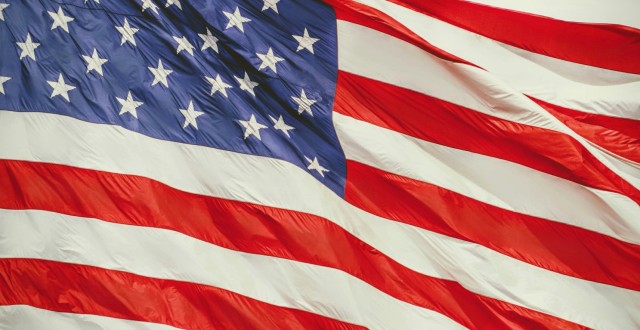
- Mediation
- Arbitration
- Court Neutrals
- Online Dispute Resolution
- Technology
- Court Decisions
- More
- Legislation
- Healthcare
- Guest Posts
- John DeGroote
- John C. Fleming
- Rick Freeman
- Professor Peter Friedman
- Honorable W. Royal Furgeson, Jr.
- James M. Gaitis
- Laura A. Kaster
- Professor John Lande
- Philip J. Loree, Jr.
- Michael McIlwrath
- F. Peter Phillips
- Professor Alan Scott Rau
- Professor Thomas J. Stipanowich
- Professor S.I. Strong
- Richard Webb
- Glen M. Wilkerson
- International arbitration
- Regulation
- Sports and Entertainment
- We’re Back!!!!Well, it’s been a while since we published and that is about to change. Since I spent much of last year becoming
 JAMS Welcomes Karl Bayer to its Panel of NeutralsJAMS, the world’s largest private alternative dispute resolution (ADR) provider, is pleased to announce that Karl Bayer
JAMS Welcomes Karl Bayer to its Panel of NeutralsJAMS, the world’s largest private alternative dispute resolution (ADR) provider, is pleased to announce that Karl Bayer Class Action Waivers in Arbitration Agreements: The Twenty-First Century Arbitration Battleground and Implications for the EU CountriesLinda S. Mullenix, Morris & Rita Atlas Chair in Advocacy at the University of Texas School of Law, has written “Class Ac
Class Action Waivers in Arbitration Agreements: The Twenty-First Century Arbitration Battleground and Implications for the EU CountriesLinda S. Mullenix, Morris & Rita Atlas Chair in Advocacy at the University of Texas School of Law, has written “Class Ac Picking the Proper Technological Tool for Problem-Solving in ArbitrationProfessor Amy J. Schmitz, John Deaver Drinko-Baker & Hostetler Chair in Law and Co-Director of the Translational Data An
Picking the Proper Technological Tool for Problem-Solving in ArbitrationProfessor Amy J. Schmitz, John Deaver Drinko-Baker & Hostetler Chair in Law and Co-Director of the Translational Data An
Recent Posts
U.S. Supreme Court Decides CompuCredit v. Greenwood
Yesterday, the U.S. Supreme Court handed down CompuCredit Corporation v. Greenwood. The issue in CompuCredit was whether claims under the Credit Repair Organizations Act are subject to arbitration. The Court held that because the Credit Repair Organizations Act is silent on whether claims can proceed in an arbitrable forum, the Federal Arbitration Act requires the arbitration agreement to be enforced according to its terms. The opinion is here. We will discuss the opinion once we have time to read it. Stay tuned.
Continue reading...GUEST-POST | Addressing Impasse by Helping the Parties Value the Case
We welcome Laura A. Kaster as a guest-blogger at Disputing. Laura will discuss a chapter of the book Definitive Creative Impasse-Breaking Techniques in Mediation, edited by Molly Klapper (NYSBA 2011) in which Laura is a co-author. Stay tuned for more posts from Laura. By Laura A. Kaster Molly Klapper had a wonderful idea. She decided to collect a wide variety of practitioners’, teachers’ and luminaries’ targeted techniques for anticipating, managing or exploiting impasse in mediation. The result is 19 chapters each of which has at least one nugget for any mediator. I know she was proud to see it published but all of us were so sad that she only had a few months to enjoy her triumph before she died in October 2011. None of the authors knew that all her energy masked an ongoing fight with cancer. So in honor to Molly, I am delighted to give you brief insights into the book. I start with my own chapter entitled “Addressing Impasse by Helping the Parties Value the Case.” Since I began studying and then teaching negotiation and mediation, I was struck by an odd phenomenon. Although Fisher and Ury established that the holy grail for determining a “bottom line” or for measuring mediation success is the Best Alternative to a Negotiated Agreement (BATNA), there is very little discussion in the literature, little teaching in law school, or little focus in law firms and corporate law departments on how to derive that number and how to improve lawyer judgment. We know the present value of the predicted trial outcome (less costs and fees in the case of the plaintiff or plus costs and fees in the case of defendant), is the BATNA – but how do we get there? In my experience as a partner in a major law firm and as inside litigation counsel, lawyers are very reluctant to give the client a number or even a range — despite the fact that the corporate clients must live and die by their own budgets and predictions. In addition, lawyers and clients are often talking a different language on this topic. What does you have “a very good case” actually mean? Impasse in mediation is often the product of seriously different valuations by the parties and sometimes the product of misreading of the costs and predictions as between lawyer and client on one side. Randall Kiser’s series of studies, including his 2010 book Beyond Right and Wrong and his 2011 book How Leading Lawyers Think gives us hard data showing that parties are incorrectly valuing their cases: 61% of plaintiffs and 24% of defendants turn down settlements and then do worse at trial (not even counting costs and fees). Kiser is working to help us learn how to improve our judgment. But, in the moment of mediation, I try to deal with a party’s intransigence — often based on cognitive biases including group think, and the sunk cost bias — without actually challenging either the party’s or the lawyer’s views – just trying to let them hear what they are actually saying. My conversation in caucus might go as follows: “Counsel, what is your risk assessment of this case?” “It’s a slam dunk” [I’m not looking for the truth] “OK – so when I was counseling AT&T, I would never say that any case no matter how clear, was better than an 80% chance of success – is that fair?” “That’s fair” “And you guys have been fighting for years so it seems likely to me that whoever loses will appeal” “Yes, likely there will be an appeal.” “And I know this is not a single issue case, but for now, let’s just assume it is and assume that you have an 80% likelihood of success on appeal.” “OK” “So between today and two or three years from today, all the costs of experts, completing discovery, your fees, both at trial and on appeal, you have a 64% chance of succeeding.” The client blanches, I leave them to talk a bit and very often, bargaining resumes. The client had no idea that “slam dunk” translated into a 64% chance of success. All this without any reality testing of the “slam dunk” prediction. This is one of the reflections in my chapter. I hope to be back with some of the other impasse-breaking techniques. Laura A. Kaster is a mediator and arbitrator in Princeton, New Jersey, working in the wider NY metropolitan area. She is the Chair of the NJSBA Dispute Resolution Section and Co-editor in Chief of the NYSBA’s Dispute Resolution Lawyer. She is a CEDR Accredited and IMI certified mediator and an adjunct professor at Seton Hall Law School and regularly presents for the NJSBA, NYSBA, ABA and PLI. From 1997–2006 Chief Litigation Counsel for AT&T Corporation. Until 1997 she was a partner in the Chicago law firm of Jenner & Block. From 1973 to 1975 she was law clerk to Judge Frank M. Coffin of the U.S. Court of Appeals for the First Circuit. More information is available at http://www.AppropriateDisputeSolutions.com.
Continue reading...NLRB Finds that Certain Arbitration Agreements Violate Federal Labor Law
As the New York Times reports, the National Labor Relations Board (NLRB) ruled on January 3, 2012 that employers could not prevent workers from filing work-related class actions. This ruling will effectively make certain employment agreements that require workers to pursue all claims individually via arbitration null and void. The decision on D. R. Horton, Inc. and Michael Cuda, Case 12–CA–25764 is here and the NLRB press release is here. Stay tuned. Technorati Tags: ADR, law, arbitration
Continue reading...Disputing’s 2011 Year-End Highlights Series
Last week’s post concludes our 2011 Year-End Highlights series. If you missed some of the posts, you can find them here or by following the ‘2011 Year-End Highlights’ link on the right, under ‘Categories.’
Continue reading...Arbitration
Mediation
Healthcare Disputes
Legal Research
About Disputing
Disputing is published by Karl Bayer, a dispute resolution expert based in Austin, Texas. Articles published on Disputing aim to provide original insight and commentary around issues related to arbitration, mediation and the alternative dispute resolution industry.
To learn more about Karl and his team, or to schedule a mediation or arbitration with Karl’s live scheduling calendar, visit www.karlbayer.com.






